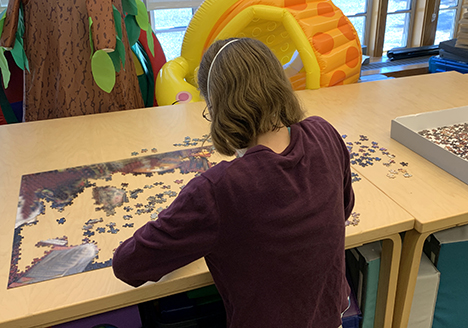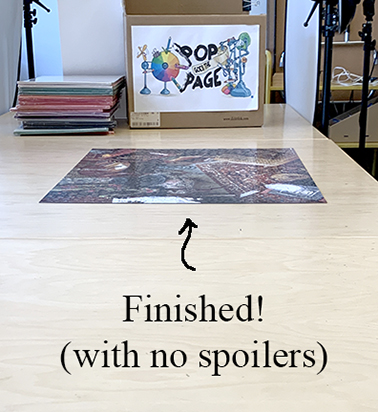 Katie, our resident queen of escape rooms, stumbled upon this little gem on a road trip, and decided to give it a go in the spirit of fun! Take it away, Katie!
Katie, our resident queen of escape rooms, stumbled upon this little gem on a road trip, and decided to give it a go in the spirit of fun! Take it away, Katie!
Tucked away on a lower shelf in the toys/games aisle at the Walgreen’s Pharmacy outside of Sevierville, Tennessee was where I found the next at-home escape room to test for Pop Goes the Page. Created by Professor Puzzle, the mini game is titled “Escape from the Museum” and includes everything you need for the solve in a handy and travel friendly 3.5-inch by 5-inch box. Recommended for ages 12+, the list price on Amazon is $20.98, though I got my game on clearance for $3.99.
After reading the explanation story and glancing through the instructions, I carefully laid out the 11 puzzle cards and accompanying materials, which included a museum map, a calendar of events, a selection of rare postage stamps, and a foldout titled the “Cabinet of Curiosities.” Never fear: there are solutions provided for all of the puzzles if you get stuck.

I worked my way through the cards, starting with what I could solve the fastest to what I found was the most difficult. My personal favorite puzzles were mazes that cleverly hid a clue within the walls of the maze; it was a puzzle style I had never encountered before, but now hope to recreate myself.
It took me just over 3.5 hours to finish. I only needed to consult the solutions list once when I could NOT figure out the connection between two words. It was obscure enough that even after I had the answer, it still didn’t make sense. And when I say the way to escape was in plain sight, it was right there and I totally glanced over it until I solved all of the puzzles!

My only complaint is the game can only be played once. I have found other at-home escape rooms are able to be solved by taking notes on scratch paper, but that’s not the case here. It would be impossible to finish without writing directly on almost all of the provided cards.
“Escape from the Museum” is ideal to bring on vacation, pull out on a rainy weekend afternoon, or play anytime you need a fun challenge. It can absolutely be solved by just one person, but the individual cards easily allow for more players to participate. I agree with the suggested age range for kids who want to tackle the game on their own, but younger children can definitely play with help from their grown-ups. Since the box is not much bigger than a deck of cards, it can easily be tossed into a backpack or suitcase for play while on the go. It gets my enthusiastic recommendation!

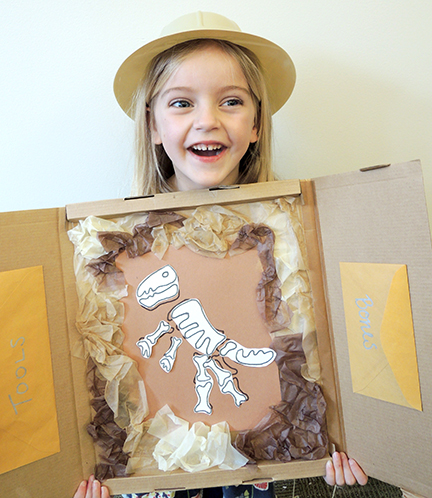 It begins as a simple brown briefcase, but unfolds into a magnetized dino dig! No briefcase? No worries! This Katie-designed masterpiece can be replicated with any box top or cardboard surface.
It begins as a simple brown briefcase, but unfolds into a magnetized dino dig! No briefcase? No worries! This Katie-designed masterpiece can be replicated with any box top or cardboard surface.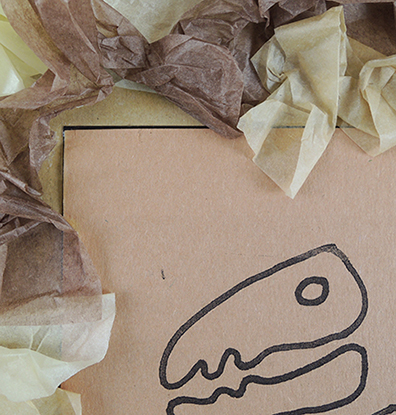 Now cut the dino bones from the template. Section the magnetic strip into pieces, then stick them onto the backs of the various bones. The bones will now connect to the dino template (and you can see we added a tissue paper border for extra fun)!
Now cut the dino bones from the template. Section the magnetic strip into pieces, then stick them onto the backs of the various bones. The bones will now connect to the dino template (and you can see we added a tissue paper border for extra fun)!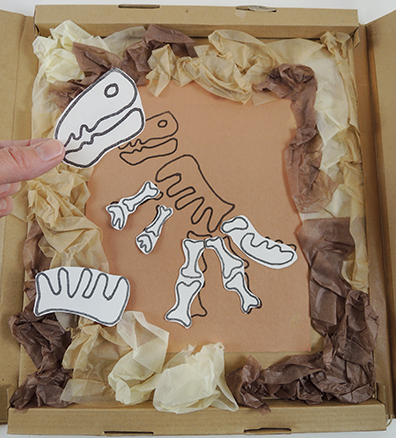 Scatter the bones through a room and have your little paleontologists discover, dig, and collect them up using the paper tools from
Scatter the bones through a room and have your little paleontologists discover, dig, and collect them up using the paper tools from 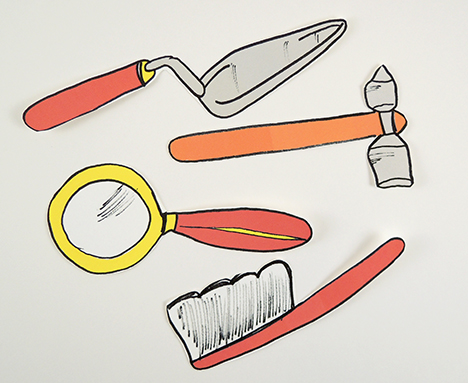 We had the good fortune of scoring some flat cardboard boxes with flaps through
We had the good fortune of scoring some flat cardboard boxes with flaps through 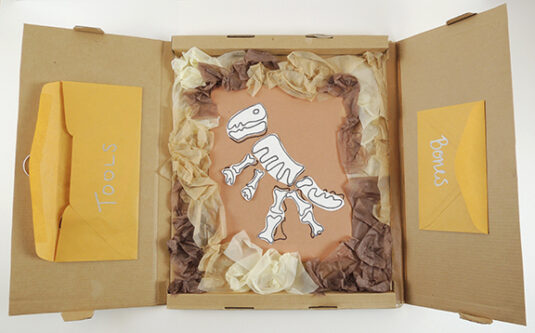 We added a string strap to turn in into a portable briefcase, complete with a wood bead and rubber band closure and
We added a string strap to turn in into a portable briefcase, complete with a wood bead and rubber band closure and 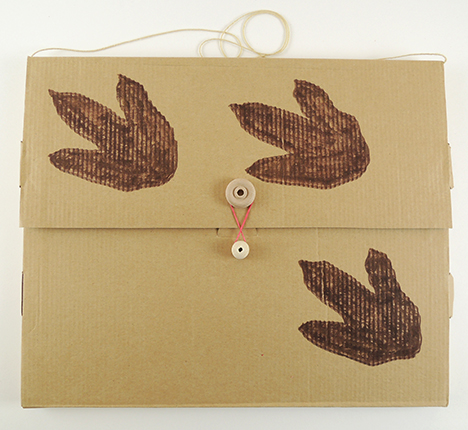
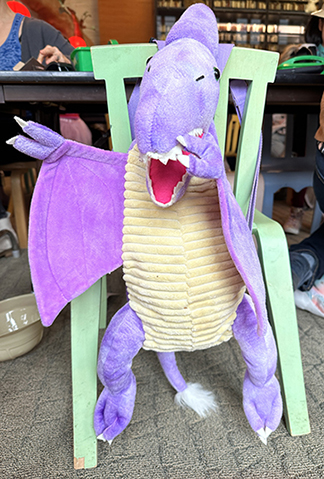 And I can’t resist adding this photo of Katie snagging the above photo whilst being carefully supervised by the dino bag’s owner. So sweet!
And I can’t resist adding this photo of Katie snagging the above photo whilst being carefully supervised by the dino bag’s owner. So sweet!
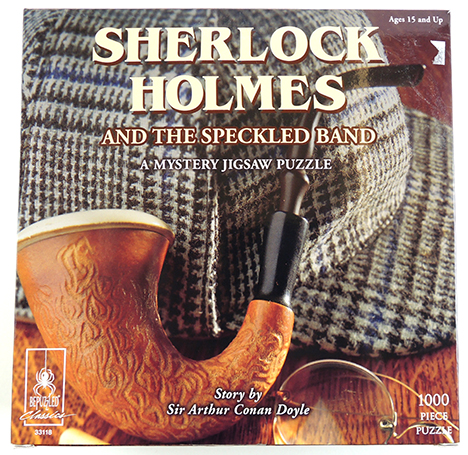
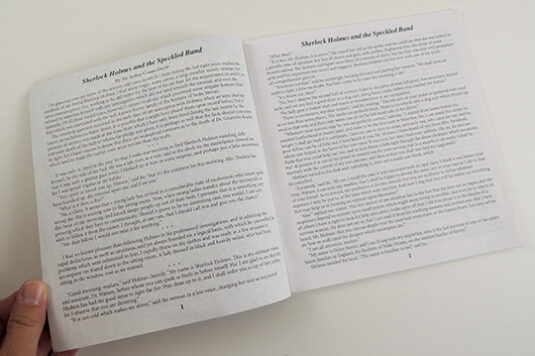

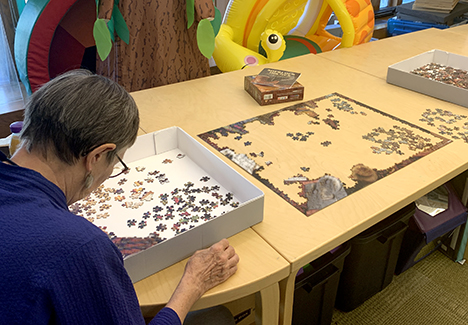 One colleague clearly loved puzzles because she slowly and methodically finished around 1/6 of the mystery in just a few hours’ time. She’s the reason I can say I completed the puzzle in just under two weeks!
One colleague clearly loved puzzles because she slowly and methodically finished around 1/6 of the mystery in just a few hours’ time. She’s the reason I can say I completed the puzzle in just under two weeks!